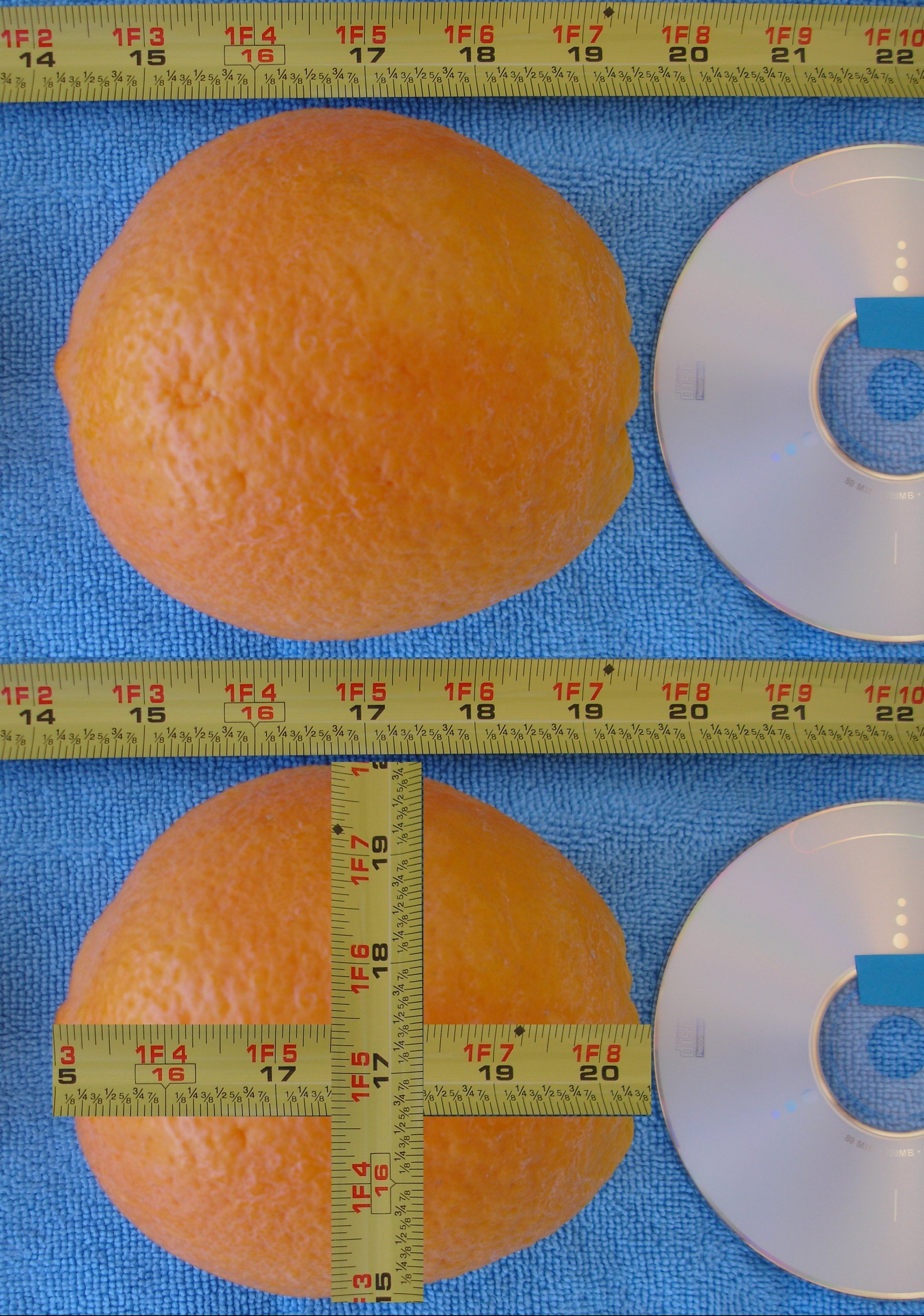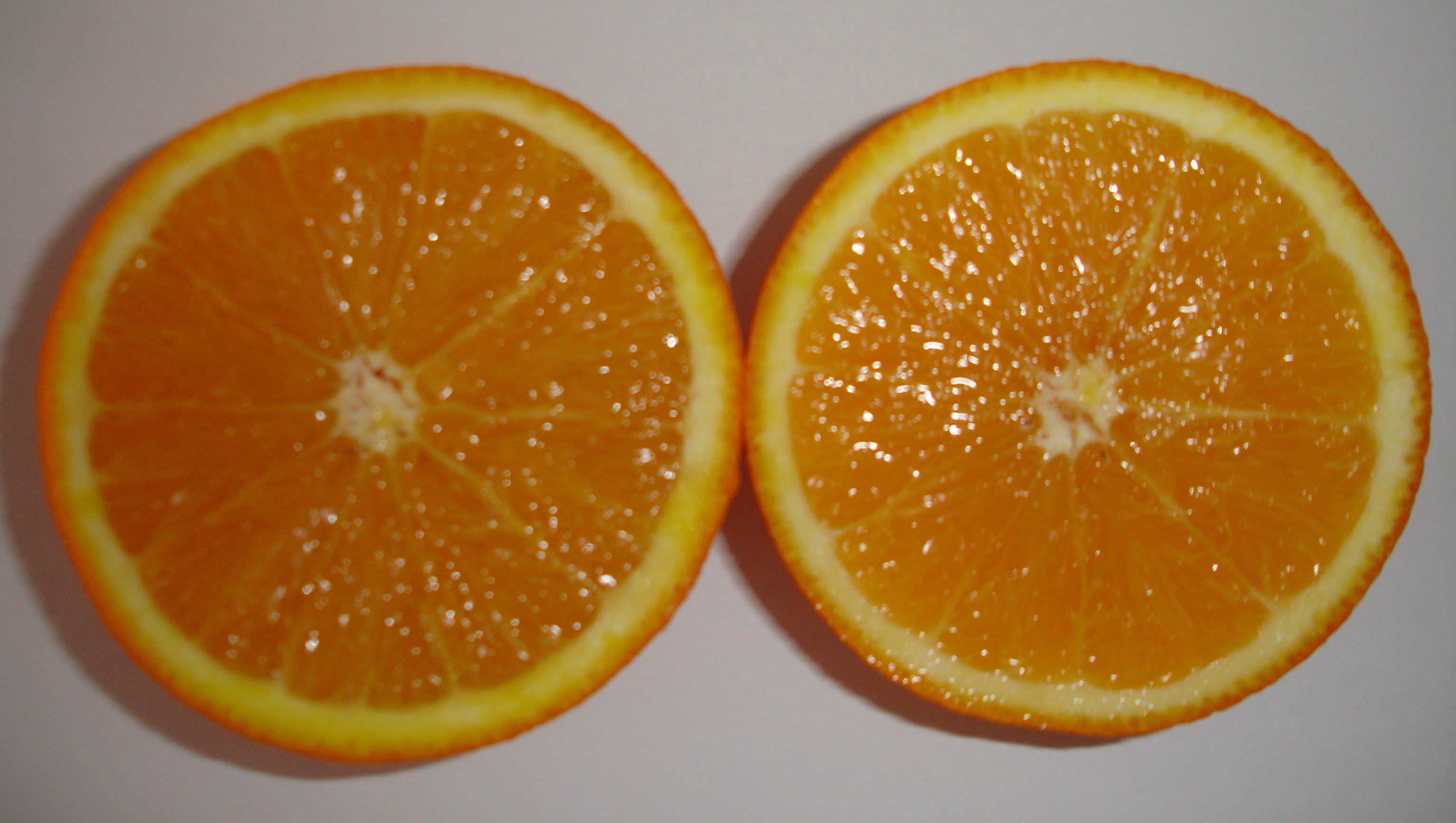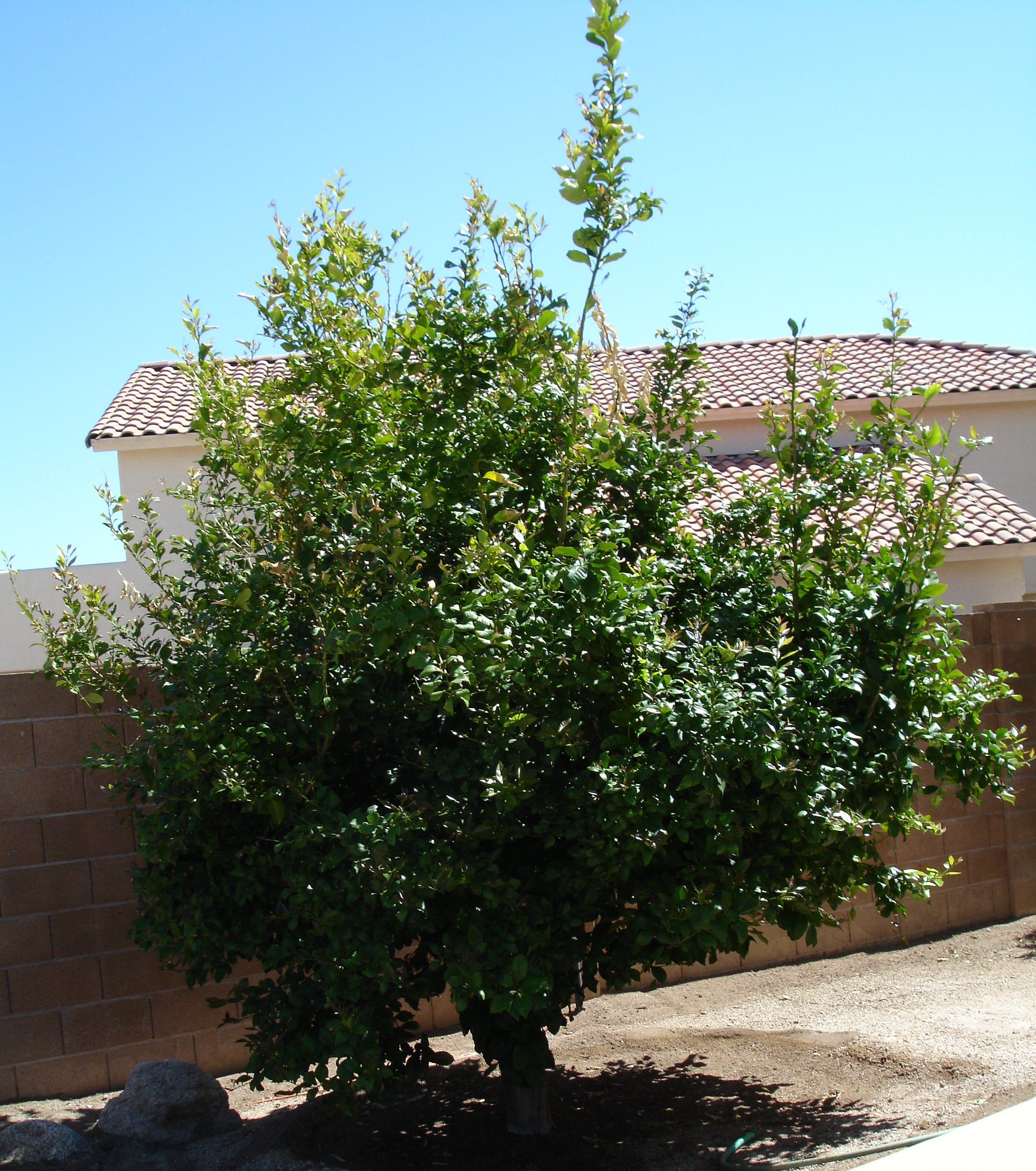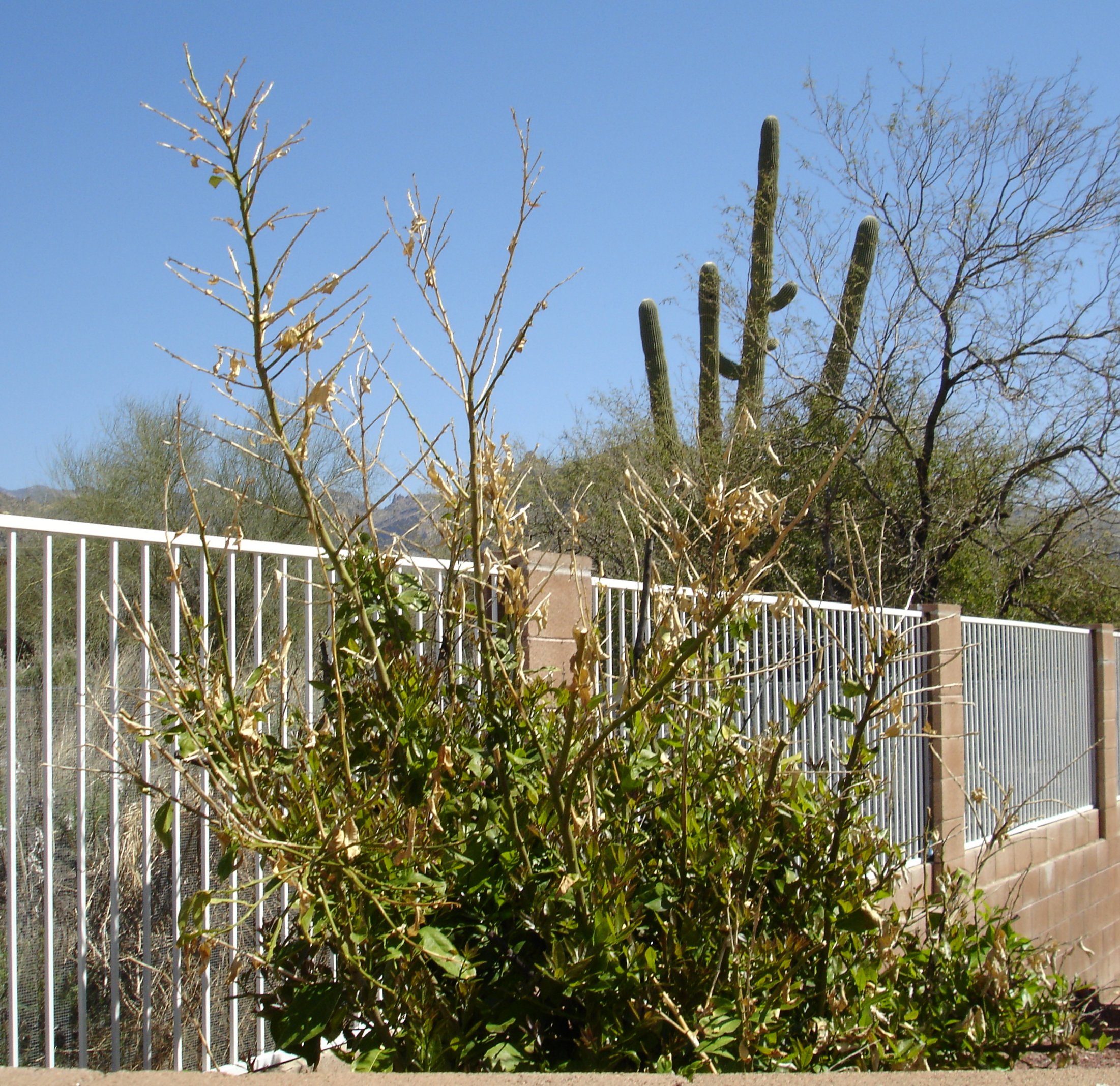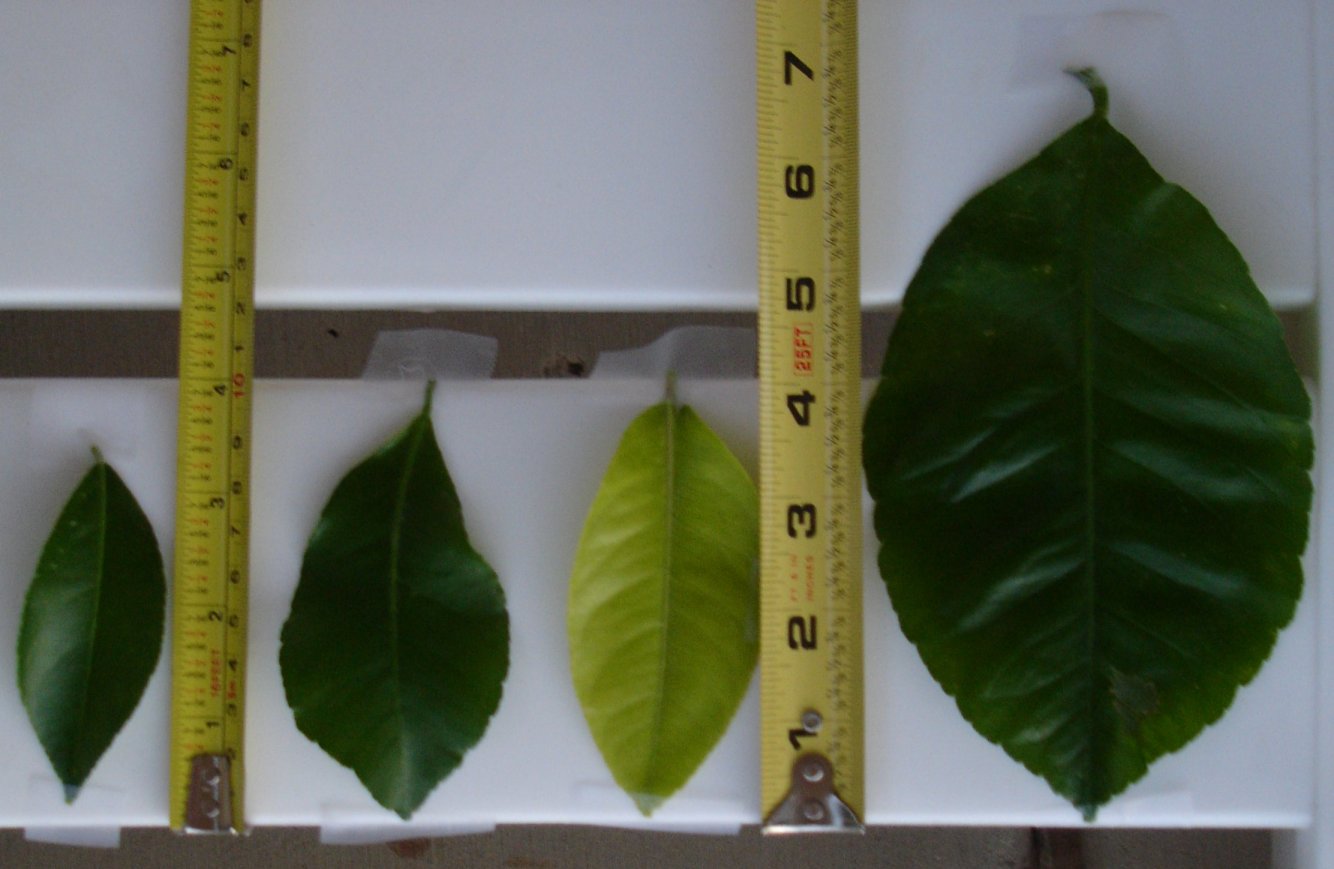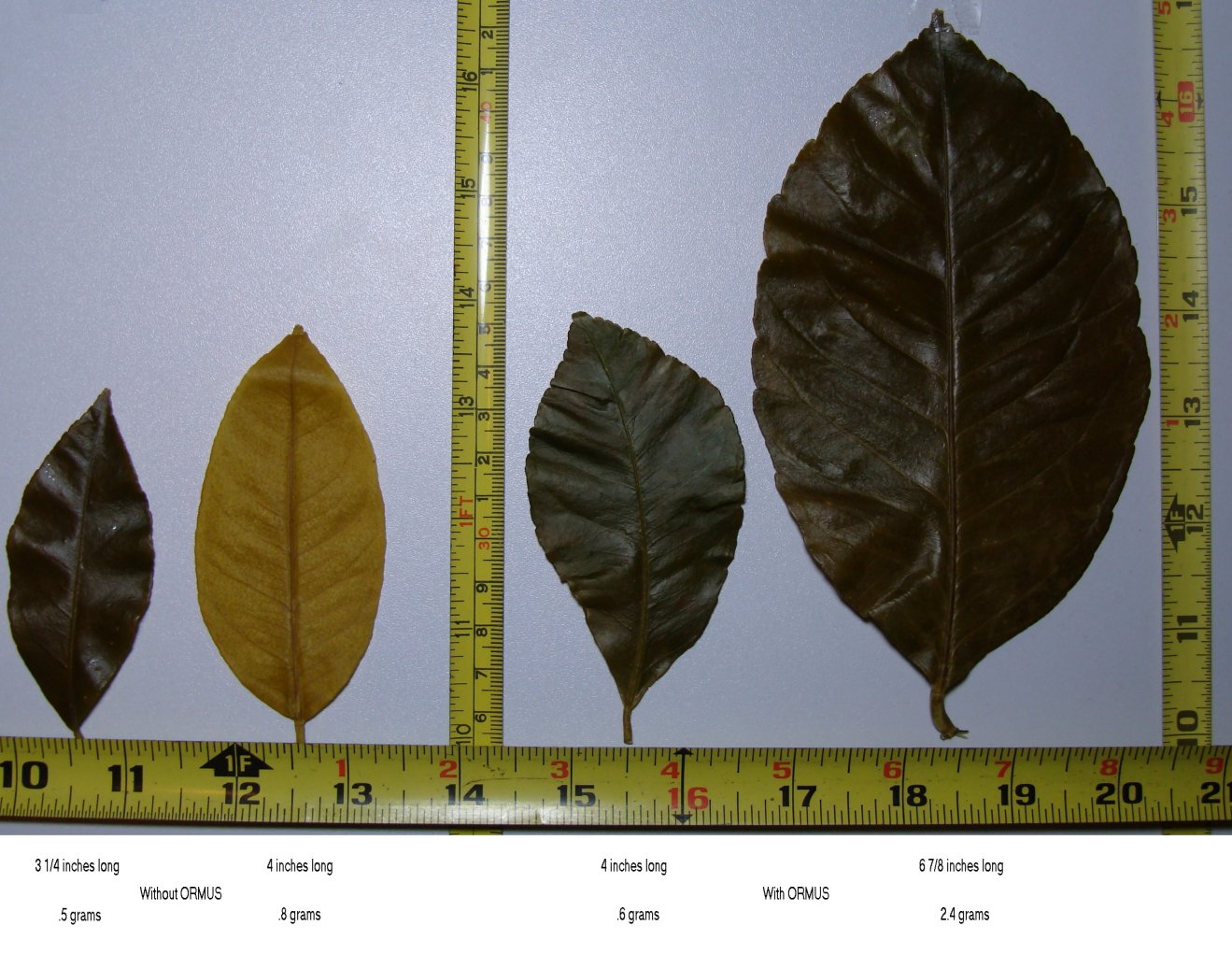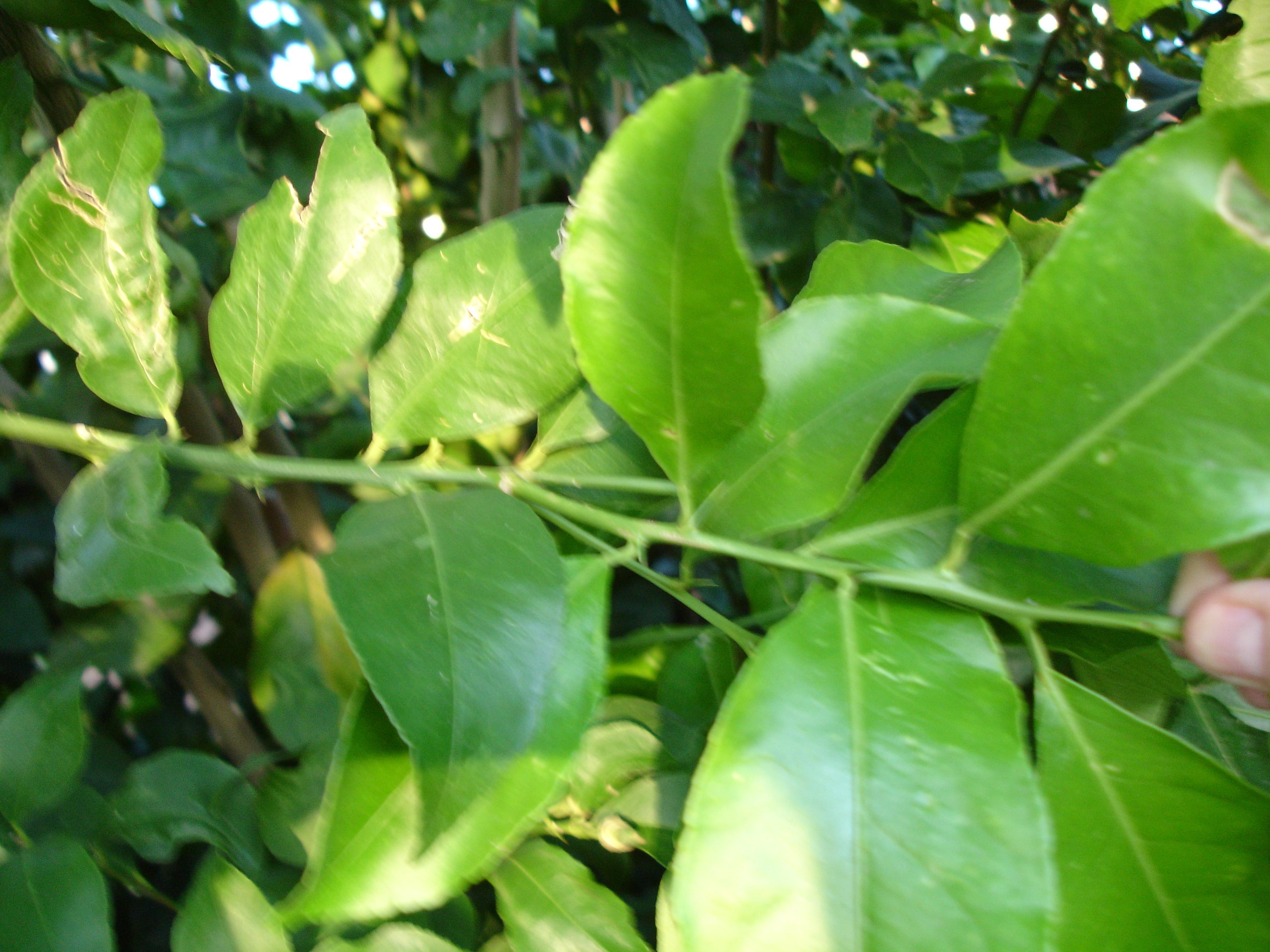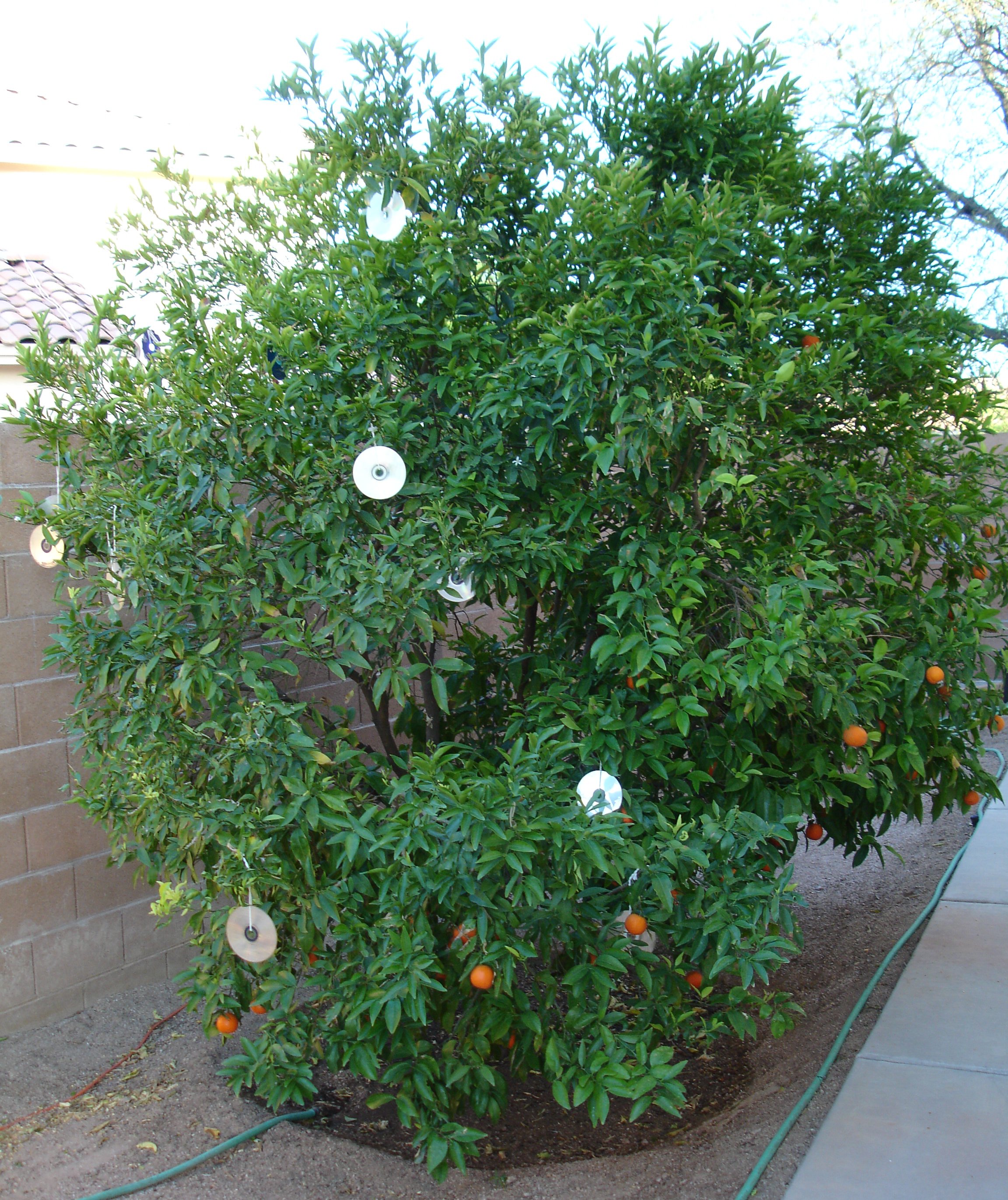Following is a comparison
between the two trees above. My neighbor's tree in the picture on the
left is about 25 feet away from the ORMUS tree on the right.
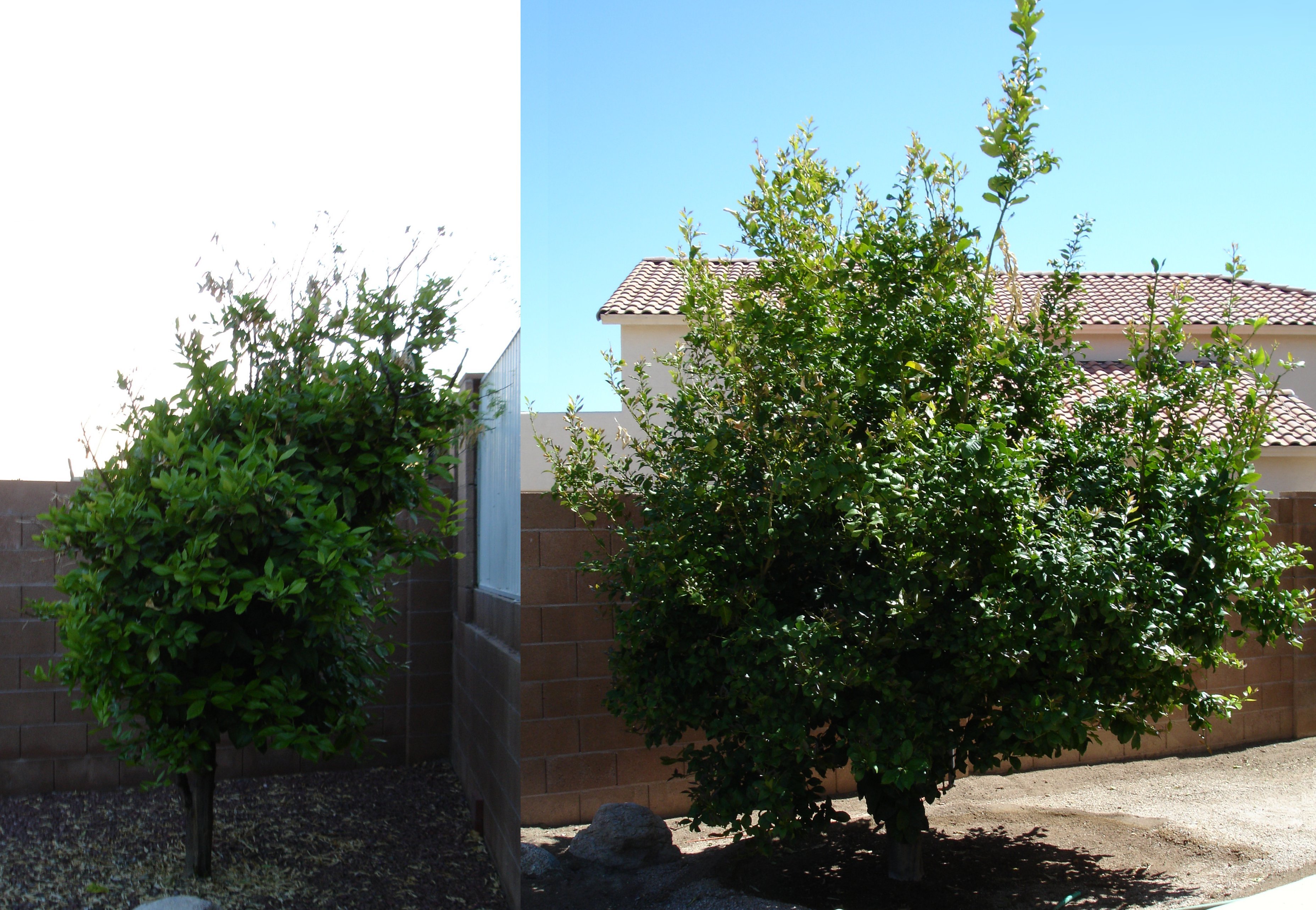
The picture of my neighbors tree on the left was taken on April 8, 2008.
The picture of my lemon tree on the right was taken on March 24, 2008
Both trees were planted at the same time, a few years ago, and looked
pretty much the same till I put the Sea-Crop on my tree.
I also took some pictures of
the leaves from these two trees. In the picture below, the leaf on the
far left was one of the smallest leaves I could find on my neighbor's
tree. The next leaf to it was one of the smallest leaves I could find
on my lemon tree. The third leaf was one of the largest leaves that I
could find on my neighbor's lemon tree and the leaf on the far right
was one of the largest leaves I could find on my lemon tree:
I sent these leaves to Barry and he took the following
picture. Note that in his picture the order of the leaves is changed.
The two leaves from my neighbor's tree are on the left and the two
leaves from my tree on the right.
Though the leaves in the second picture are a bit desiccated, Barry
weighed them for me and he found that the large leaf from my tree
weighed three times as much as the large leaf from my neighbor's tree.
The smaller leaves on both trees survived the winter. The smaller
leaves on my tree probably finished growing before I applied the
Sea-Crop last October.
I also took some pictures of some leaves still on the branches of my
lemon tree:
As you can see in the
picture above, the older (more ragged) leaves on the left are much
smaller than the newer leaves on the right.
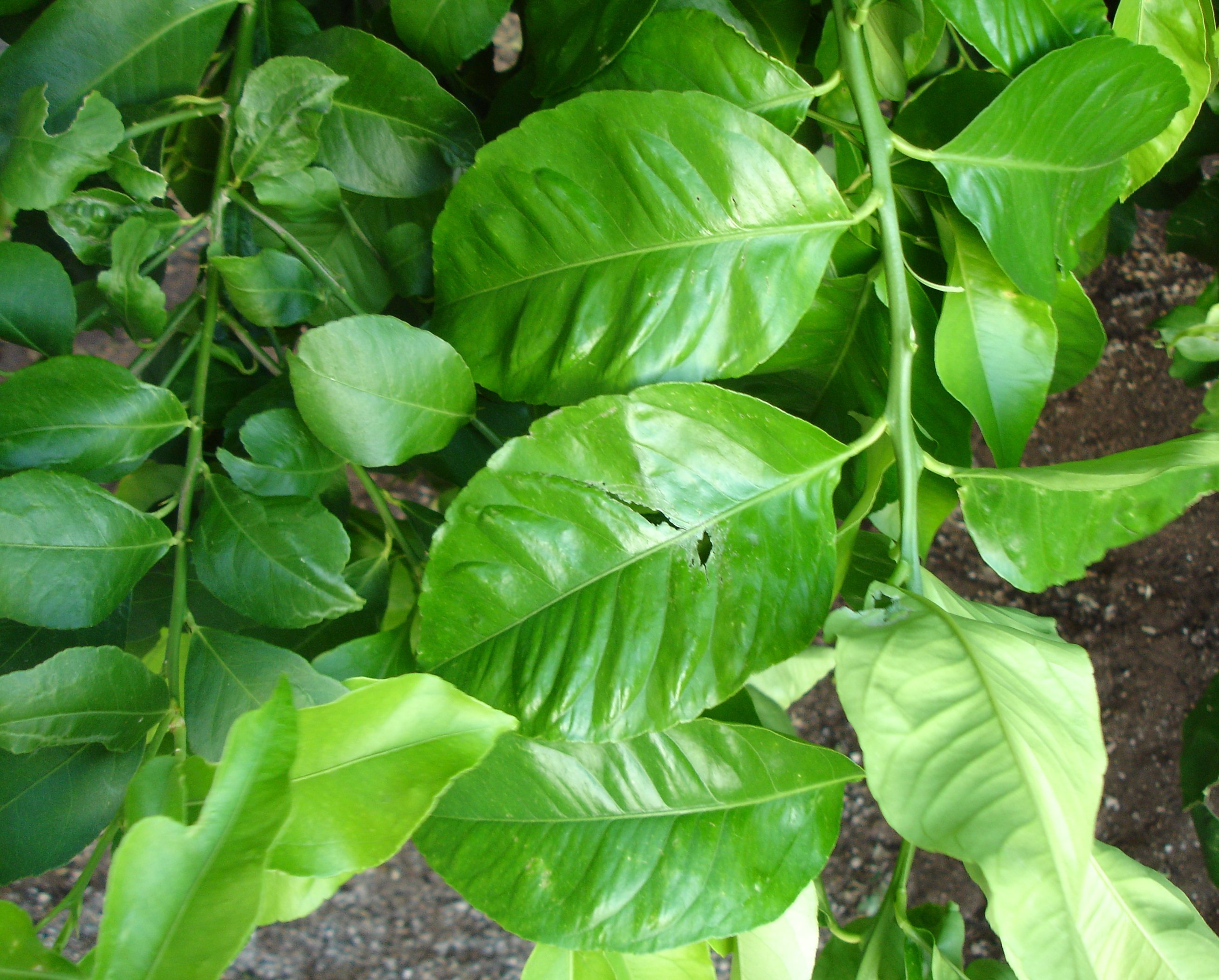
You can also see this in the
picture above with an older inner branch on the left and the more
recent growth on the right.
Next is a picture of my
tangerine tree. I don't have any before pictures of this tree or a
neighbor's tree for comparison.


